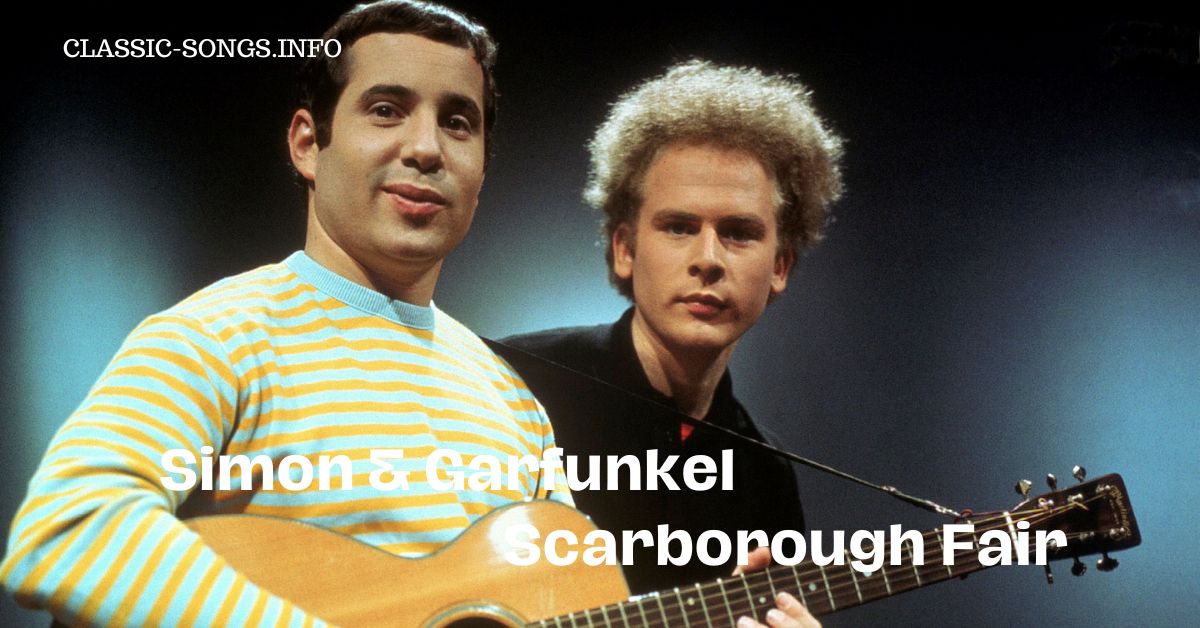About the song
Scarborough Fair, a song that evokes a timeless yearning and a haunting melody. Few renditions capture this essence quite like the iconic version by folk-rock duo Simon & Garfunkel. Released in 1966 on their album Parsley, Sage, Rosemary and Thyme, it became an instant classic, propelling the traditional English ballad into the mainstream consciousness.
The song’s origins are shrouded in the mists of time. Child Ballads, a collection of English and Scottish ballads compiled by folklorist Francis James Child in the late 19th century, includes Scarborough Fair (Child Ballad Number 2). This suggests the song’s existence well before the 20th century, passed down through oral tradition for generations. The lyrics themselves paint a vivid picture of a lost love, with the protagonist sending seemingly impossible tasks to their former lover who resides in Scarborough, a coastal town in North Yorkshire, England.
Simon & Garfunkel’s rendition beautifully captures the melancholic essence of the ballad. The gentle guitar picking, Paul Simon’s signature tenor, and Art Garfunkel’s soaring harmonies create a soundscape that is both intimate and evocative. The melody itself, a Dorian mode with its characteristically “minor” sound, perfectly complements the themes of heartbreak and longing.
One of the most striking aspects of Scarborough Fair is the use of “parsley, sage, rosemary, and thyme.” These aren’t just random herbs; they hold symbolic meaning. In various cultures, these herbs have been associated with love, death, memory, and domesticity. Their inclusion in the seemingly impossible tasks – gathering them “without any silver needle / And never a stitch to sew with” – adds another layer of complexity to the song. Are these tasks truly meant to be completed, or are they a symbolic representation of the immense difficulty of rekindling lost love?
Simon & Garfunkel’s version also incorporates another traditional ballad, “The Canticle.” This interweaving of two separate narratives adds depth and intrigue. While the exact connection between the two songs remains open to interpretation, it reinforces the sense of mystery and lost knowledge surrounding folk music.
Scarborough Fair’s enduring legacy is a testament to its power. It has been covered by countless artists across genres, from folk legends like Martin Carthy (who introduced the song to Simon & Garfunkel) to modern pop stars. The song continues to resonate with listeners, a timeless tale of love and loss wrapped in a hauntingly beautiful melody. So, the next time you hear Scarborough Fair, take a moment to appreciate its rich history, its symbolic layers, and the masterful performance by Simon & Garfunkel that brought it to a new generation.
Video
Lyrics
“Scarborough Fair / Canticle”
Parsley, sage, rosemary and thyme.
Remember me to one who lives there.
She once was a true love of mine.
On the side of a hill in the deep forest green.
Tracing of sparrow on snow-crested brown.
Blankets and bedclothes the child of the mountain
Sleeps unaware of the clarion call.
Tell her to make me a cambric shirt:
Parsley, sage, rosemary and thyme;
Without no seams nor needle work,
Then she’ll be a true love of mine.
On the side of a hill in the sprinkling of leaves.
Washes the grave with silvery tears.
A soldier cleans and polishes a gun.
Sleeps unaware of the clarion call.
Tell her to find me an acre of land:
Parsley, sage, rosemary and thyme;
Between the salt water and the sea strands,
Then she’ll be a true love of mine.
War bellows blazing in scarlet battalions.
Generals order their soldiers to kill.
And to fight for a cause they have long ago forgotten.
Tell her to reap it with a sickle of leather:
Parsley, sage, rosemary and thyme;
And gather it all in a bunch of heather,
Then she’ll be a true love of mine.
Are you going to Scarborough Fair:
Parsley, sage, rosemary and thyme.
Remember me to one who lives there.
She once was a true love of mine.
